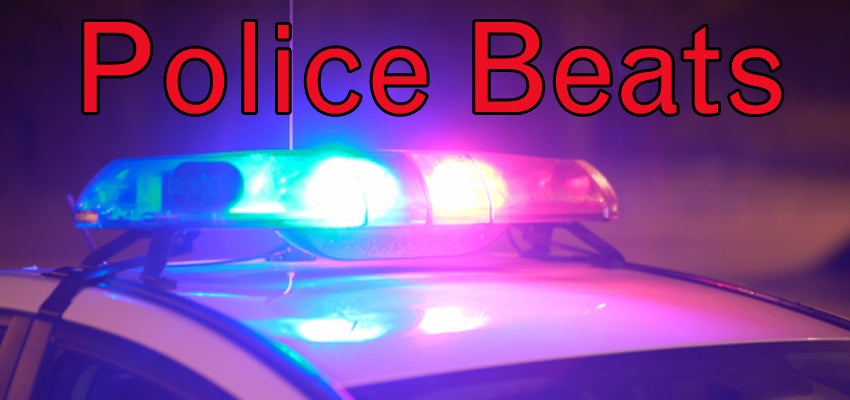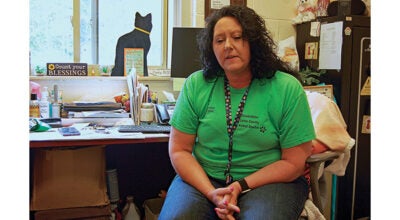If it says stop, you stop
Published 8:31 am Tuesday, April 22, 2014

An increasing number of motorists passing stopped school buses has school system administrators worried the carelessness is putting children’s life at risk.
A big yellow school bus with an extended “Stop” sign with flashing lights usually brings passing motorists to a stop.
But not always, at least for school buses on Elizabethton City School routes.
Elizabethton City Schools Director of Federal Programs John Hutchins said the bus drivers have been filing more reports of incidents of drivers passing stopped school buses in the past two years.
“It has been a gradual increase, but in the last two years it has been a bigger problem,” Hutchins said. “Over the past year, the bus drivers have reported a tremendous number of drivers passing the buses. It has gotten worse.”
Hutchins did not have an exact count of the number of incidents that have been reported but said the worst routes for having motorists passing stopped school buses were on Elk Avenue, Broad Street and Mill Street.
Hutchins said one bus driver submitted 15 reports of incidents he had been able to collect tag numbers for from April 4 until April 21. The route was in the Mill, Cottage, Race and Broad Street area.
Carter County School System bus routes seem to have a better rate of people who stop for the buses, but part of the credit might go to simple physics.
CCSS Director of Transportation Jerry Nave said the county buses do have occasional instances where drivers would pass a bus.
“We are fortunate, I guess you could say, that the roads for most of our routes are not wide enough for people to pass the busses when they come to stop,” Nave said.
He said the worst spots for the offenses to happen were on the four-lane highway going from Hampton to Roan Mountain and on Gap Creek Road.
Both Hutchins and Nave noticed the instances of drivers passing stopped buses happened more often on roads with multiple lanes, and on roads where there was more traffic.
“On Gap Creek, people use that road as a shortcut when they are coming to or from Johnson City, and there is a lot of traffic on that road,” Nave said. “They get in a hurry.”
Hutchins said drivers being in a rush, combined with a lack of knowledge about the laws regarding stopped school buses, seemed to be behind most of the offenses in the city.
Since the city bus drivers had been filing more complaints of drivers passing them, the ECS reached out to the Elizabethton Police Department for extra patrols and monitoring. Hutchins said that within one week’s time, the EPD pulled over 15 to 20 drivers on Broad Street that had passed a parked school bus to issue the driver a warning.
“Almost all of the people they pulled over said they didn’t know they had done anything wrong,” Hutchins said. “Because there is a fifth lane on Broad and Elk, people think they don’t have to stop, but they do. When the road has no median, drivers in both directions of traffic have to stop.”
Hutchins said one exception to that was on Mill Street, a two-lane road that bypasses a section of Broad Street from Sycamore Street to Lynn Avenue. He said drivers on that route were reporting more instances of being passed when stopped in the past few weeks.
“I can kind of see how, without education, people would not know they have to stop on a five-lane road, but I can’t understand how it could happen on a two-lane,” he said. “It is not worth the life of a child, whether the driver is in a hurry, or they just don’t know.”
Hutchins believes the state could do more to get the word out about the laws regarding stopping for school buses.
“When do people hear the laws that they are supposed to stop?” he questioned. “It is in the test manual when you take a driver’s license test but that is about it. We are not doing a very good job getting the word out about school bus laws.”
For both school systems, the process to report violations are the same. The drivers collect as much information as possible, such as tag number, make and model of car and color, and turn the information over to their supervisor. The supervisors then contact the correct law enforcement personnel to investigate.
“The law enforcement does a good job,” Nave said. “Anytime we have an issue, and we tell them about it, they look into it. The constables are always out there, patrolling and making sure the stops are as safe as possible. The Highway Patrol is real good about it too. When we call them, they always take care of it.”
Hutchins said the city has also taken steps to move as many bus stops off of the major streets as possible so students and buses are not being faced with the issue to begin with. He said the bus drivers also keep a lookout on the surroundings before letting the students exit the bus.
“I am really concerned about the frequency that we are seeing these problems,” Hutchins said. “When we started counting incidents, every incident is a potential accident. I am not the person to play the odds, and I am definitely not going to play the odds on the life of a child.”
Tennessee state law says that when the red lights are flashing and the stop arm is extended, motorists must stop their cars and wait until the red lights are turned off, the stop arm is withdrawn and the bus begins moving again before they start driving.
When a bus is stopped at an intersection to load and unload children, drivers from all directions are required to stop until the bus resumes motion. When driving on a highway with separate roadways for traffic in opposite directions, divided by a median space or a barrier not suitable for vehicle traffic, the driver need not stop, but should proceed with caution.





